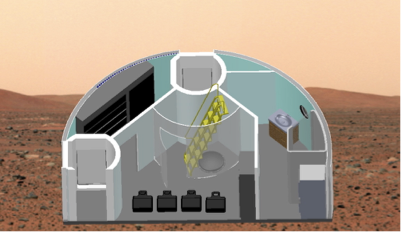Another benefit of this ladder-well design is something that Ty helped Brandon work out. Claustrophobia can become a problem for people cooped up in small spaces for long periods of time. It can affect many spacefarers, even if there was no sign of it in the psychological evaluations. So, the more open a space can be made to appear, the better for the crew’s psyche. Mirrors were considered, which can double the visible size of a space, but they can also cause disorientation due to distortion and multiple images.
To lessen the claustrophobic effect of this enclosed space, Ty and Brandon introduced the concept of constructing the interior walls from leaded, clear acrylic. While mostly transparent, the leaded acrylic still provides radiation shielding (much like the small windows used by X-Ray technicians). They jokingly referred to the moment they came up with this idea as a ‘moment of clarity’, but opted to build the staterooms out of opaque materials. Of course, they first wanted to make it even stronger and lighter by using a clear, leaded polycarbonate, reasoning that polycarbonate is 250 times stronger than glass and about five times stronger than acrylic. But, as leaded polycarbonate doesn’t exist yet and the leaded acrylic was already in common use and commercially available it seemed prudent to go with that.
The two did, however, use clear polycarbonate in designing the interior walls on the Hydroponic Deck. The leaded version would have been nice to have, but would be sort of like ‘Transparent Aluminum’, the stuff of science fiction.

